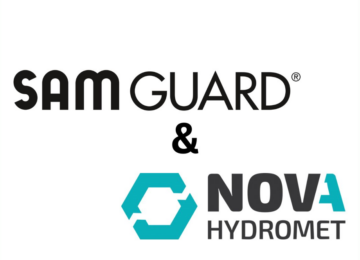February 22, 2024
By: Isabell Bücher
The Patented Innovations that Power SAM GUARD® Technology
Process manufacturing plants that use SAM GUARD® are already familiar with the excellent results that it brings. Its efficacy in reducing alert fatigue and identifying the root cause of upcoming known and unknown failures speeding up root cause analysis are clear to anyone who has used the solution. But you might not know that all these benefits rest on several important patents which represent the innovation that SAM GUARD® brings.
Without SAM GUARD®, process engineers receive a flood of alerts which are not meaningful, and sometimes are so vague and numerous as to be close to useless. When they do receive alerts that are clearly urgent, the process of root cause analysis and working out how to fix it is usually convoluted, time-consuming, and tedious.
While these alerts are more useful than no system at all, they still often result in longer downtime and higher labor costs. SAM GUARD® changes that with its innovative technology for predictive analytics. SAM GUARD®’s patented technology is designed to help process plants prevent employee burnout due to alert fatigue, reduce downtime, and shorten time to resolution. Let’s take a closer look at the three patents that make the SAM GUARD® difference.
Patent #US 10,789,292 B2: Improved OPM
The first patent, US 10,789,292 B2, upon which all subsequent Precognize technology rests, was filed in the US in 2013 and granted in 2020. It concerns a significant improvement to existing Object Process Methodology (OPM), by embedding data about the object and processes, together with the sensors that provide that data, into a single asset representation.
With the new method, it’s possible to deliver a unified representation of the relationship between data concerning the object and processes, and the object and processes themselves. The patent protects our method of incorporating data into the OPM.
Patent #US 10,318,364 B2: Smart alert aggregation
Our second patent was filed in the US in 2015 and granted in 2019. It outlines a method of smart alert aggregation, which reduces the number of total alerts and ensures that each one communicates meaningful information. This patent builds upon the previous one, turning the passive asset representation of the OPM into a tool for aggregating alerts in a way that produces meaningful insights.
The technology described in this patent effectively converts a mass of elementary alerts, which are too numerous and localized to be valuable, into larger-scale events that are few, precise, and inform you about real problems. Alerts that do not aggregate into a real problem do not reach the customer, resulting in a very manageable average of five events per day.
For example, there may be a slew of elementary alerts about high temperatures, which is not useful information since there are many possible causes which would not give rise to alarm. A larger-scale event, however, might notify the customer that temperature is high, pressure is low, and flow has slowed significantly, which guides them to understand the urgency and to begin to find a potential cause.
This patent also includes methods that make it possible to score alerts according to the value the customer assigns to a given item. If a part is critical, even an alert that is relatively low in importance could be passed on to the customer, while they might receive alerts about a less critical part only when the issue is really severe.
Patent #US 11,544,580 B2: Hints for root cause identification
Our third patent, filed in the US in 2017 and granted in 2023, builds on the first patent in a more complex way and serves as an important corollary to the second patent. The second patent aids in detecting issues, ensuring that the customer receives only the right number of meaningful alerts that direct them towards the cause of the problem. This patent, however, assists with the process of identifying the specific equipmentobjects within the plant that are causing the problem, so that engineers can fix it more quickly and easily.
As laid out in this patent, our technology draws on domain knowledge stored within the asset representation discussed in the first patent, combining it with sensor data to produce calculated indicators that continuously track everything that is occurring in the system. Once an issue has been detected (using the technology detailed in the second patent), the calculated indicators enable the generation of precise hints needed to identify and understand the cause of the issue.
These hints are “smart alerts” that are localized and don’t require aggregation. We present these smart alerts to the customer’s process engineers or SAM GUARD®’s Digital Transformation Expert (DTE) service team, making it simple for them to complete root cause analysis and resolve the problem.
The foundation of SAM GUARD®’s success
These patents operate together to deliver our unique SAM GUARD® predictive analytics solution. Patent one’s technology provides accurate asset representation, which enables the tools described in patent two to generate aggregated alerts for better detection rates, preventing process engineers from becoming overwhelmed by floods of alerts.
The technology protected by the first patent also makes it possible for the solution laid out in the third patent to deliver a clear indication of the cause of the alert, so as to guide process engineers to localize issues within the system and resolve them more quickly.
Together, these three progressive innovations deliver SAM GUARD®’s enhanced predictive analytics capabilities that reduce downtime and costs and improve OEE.





